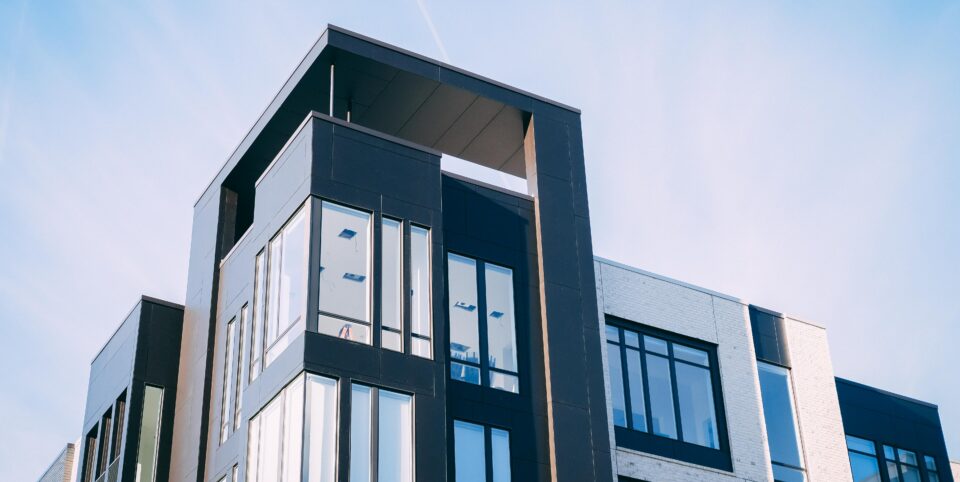Contact
020 4515 6728
info@ccameron.co.uk
Charles Cameron & Associates
Blackfriars Foundry
154-156 Blackfriars Road
London SE1 8EN
Investing in a house in multiple occupation
November 9, 2022
Information published was correct at the time of writing
Perceptions are shifting to meet the changing demand from tenants

HOUSES IN MULTIPLE Occupation (HMO) are moving up the value chain as tenants demand better amenities, research has revealed[1]. A survey of HMO landlords identified tenants today expect en suite bathrooms, larger rooms, high speed broadband and quality furnishings.
An HMO is a property consisting of at least three people who are not from the same connected household (i.e. a family) and share facilities, such as a central living space or kitchen. There has been a trend over the past year, with 48% of landlords saying they’d seen growing demand for high-end HMOs and 45% saying demand from young professionals was up over the past year.
CHANGING DEMAND
Just under a quarter, 23%, of landlords also said HMOs were appealing to older, more affluent tenants. The majority of landlords said demand for higher speed broadband had increased over the past year (56%), while a significant proportion of tenants were seeking larger rooms (39%), en suite bathrooms (53%) and better quality furnishings (39%). Elsewhere, 35% of landlords said tenants were asking for office facilities to enable home working.
HMOs previously had a reputation for poor-quality housing, but that perception is shifting as landlords upgrade stock and meet the changing demand from tenants. Tenants will no longer accept poor quality – they want broadband, modern and attractive furnishings.
STRONG GROWTH
The research findings highlighted there was also a strong growth in demand from landlords to acquire HMOs during the pandemic. This may be a reflection of the wider shortage in rental properties with tenants opting for a room in a shared home because one or two-bedroom properties are in short supply. Some tenants also require the flexibility and social nature of HMOs, particularly if they are renting with friends.
According to the research, an investment case for HMOs is compelling, with 47% of landlords with an HMO agreeing that they offered better rental yields than other residential rental property. Some 40% said HMOs offered better financial protection from voids, while 53% said there was no material difference in capital gain between single units and HMOs, making income the deciding factor.
RENTAL INCOME
The largest proportion of HMO landlords, 42%, reported net yields of over 10%, while 64% reported yields of 8% or over. At 72%, the majority said maintenance, insurance and utilities accounted for less than 25% of their gross rental income across their portfolios. However, landlords also spend a high proportion of their rental income on the maintenance of the HMO.
Nearly two-thirds, 63%, of landlords spend over 10% of rental income on annual property maintenance. Nearly half, 46%, of tenants fell into the young single bracket, with 47% students and 41% white collar, clerical or professional workers.
HIGHER YIELDS
Elsewhere, 27% of tenants were manual workers, with 15% represented by older singles. Smaller groups included Universal Credit Claimants (9%), families with children (4%) and migrant workers (4%). One in five tenancies were in place for two years but by far the most tenancies were for one year. Just 2% of tenancies lasted longer than five years.
Given shifts in tenant demand and the higher yields on offer, HMO landlords are more likely to purchase additional stock than sell, according to the research. Over four in ten HMO landlords, 43%, said they planned to purchase an additional HMO property in the next six months. There is roughly an equal split (22% vs 21%) in the proportion of landlords who plan to buy an existing HMO against those who will buy another type of property and convert.
BIGGEST CHALLENGE
Rapidly rising energy costs stood out as the frontrunner when HMO landlords were asked what their biggest challenge had been over the past 12 months. Some 64% of those surveyed said higher energy bills had been a concern, reflecting the fact that 62% of tenancies in HMOs are inclusive of all bills, including energy, broadband and Council Tax.
A further 14% include utilities bills only – gas, electricity, water and Council Tax. While one in five landlords said they had no plans to pass higher energy bills to their tenants, more than half do plan to increase rents to cover the higher cost of living. Some 19% have already raised their tenants’ rents.
Don’t forget, our professional, friendly advisers are on hand to support you and can help you explore all of your options.
Source data:
[1] https://www.paragonbankinggroup.co.uk/news/news-releases/hmos-moving-up-the-value-chain



